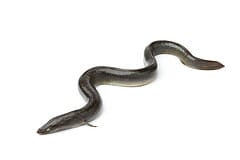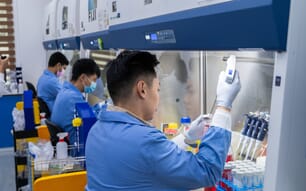Nuclear power stations require large amounts of water for their cooling systems and 86% of the world’s nuclear reactors use water from natural ecosystems, drawing water from the sea or a nearby river and pumping it back after use.
 This practice can trap and kill aquatic species which are sucked up with the water. Technology used to pump fish and other species back into their natural environment could be valuable, especially for species of conservation concern.
This practice can trap and kill aquatic species which are sucked up with the water. Technology used to pump fish and other species back into their natural environment could be valuable, especially for species of conservation concern.
This study examined a case study in Sweden, focusing on the impacts of this practice on the European eel (Anguilla anguilla). This remarkable animal undergoes a vast migration from the Sargasso Sea off North America to the freshwater lakes, rivers and streams of Europe and back.
The species is now critically endangered globally, possibly as a result of a combination of different factors, including climate change, overfishing and pollution.
The research was carried out at the Forsmark nuclear power plant in eastern Sweden. At the plant the water is pumped into a filtering station and any animals or debris are discarded. In 2010 and 2011 the researchers recorded the number and weight of the fish trapped over a 24 hour period every week.
The results showed that over the two years, 58 600 000 fish, totalling 101 100 kg, were trapped at the filtering stations. Overall, 1943 European eels were caught in 2010 and 1166 in 2011. The researchers calculated that, if a system were put in place to pump the fish back into the sea, as has been implemented at some other plants, approximately 1300 eels would be saved.
This was calculated using the data from this study and previous research from other power stations into the survival rates of eels that are pumped back.
The most common fish caught were three-spined sticklebacks, however, large numbers of herring were also caught, especially in spring and autumn. The numbers of herring are of particular importance since the herring fishery in the area supports local livelihoods.
In fact, the numbers of herring trapped at the power plant in 2011 reached a third of the herring landings by fishermen in the Forsmark area in the same year.
The researchers were not able to investigate whether this is affecting herring populations in the long term, but suggest further research is needed on this.
Overall, this study showed that a system to return European eels to the sea would help conserve this species. While the researchers did not investigate the economic profitability of this possibility, they stress the fact that the European eel is globally endangered and therefore such investment may be considered worthwhile.



